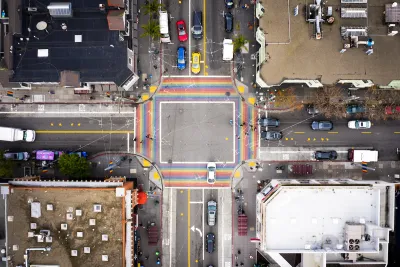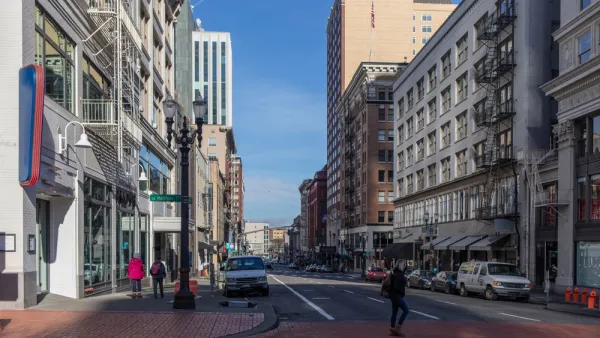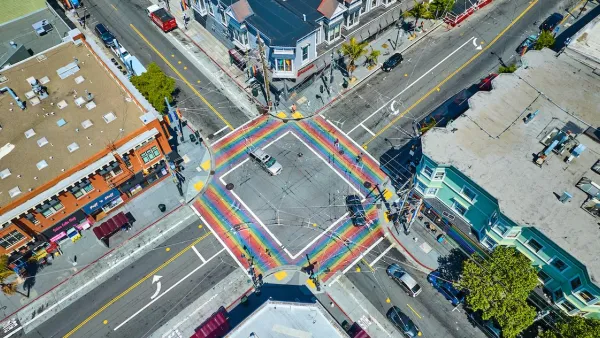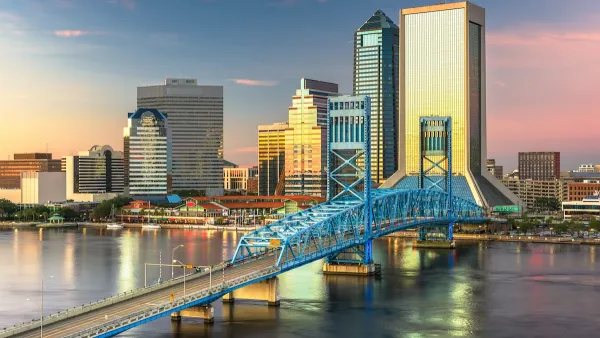The city wanted to eliminate traffic deaths by 2024. It didn’t.

“Despite a decade of work and a budget of hundreds of millions of dollars, San Francisco's 2014 Vision Zero initiative, aimed at eliminating traffic deaths in the city by 2024, never achieved its ambitious goal,” writes Noah Baustin in The San Francisco Standard. In 2023 so far, the city saw 25 people killed in traffic crashes—just six fewer than the number of deaths in 2014. In 2022, 39 people were killed in collisions.
Transportation advocate Luke Bornheimer told the Standard, “We have objectively failed.” The article details the city’s Vision Zero initiatives, which include bike lanes, improved pedestrian signals, and intersection ‘daylighting.’ “These initiatives all aim at a central goal: slow down traffic and prevent vehicles from colliding with pedestrians or bicyclists.”
The city is focusing on improvements on streets on its ‘high injury network.’ According to SFMTA Vision Zero Program Manager Uyen Ngo, “By the end of 2024, every remaining mile of the network is slated to receive crosswalk upgrades, pedestrian head starts before the light turns green, increased visibility around intersections, longer walk times and an advanced stop line for vehicles before the crosswalk.”
FULL STORY: San Francisco Spent Hundreds of Millions to End Traffic Deaths. People Are Still Dying

National Parks Layoffs Will Cause Communities to Lose Billions
Thousands of essential park workers were laid off this week, just before the busy spring break season.

Retro-silient?: America’s First “Eco-burb,” The Woodlands Turns 50
A master-planned community north of Houston offers lessons on green infrastructure and resilient design, but falls short of its founder’s lofty affordability and walkability goals.

Delivering for America Plan Will Downgrade Mail Service in at Least 49.5 Percent of Zip Codes
Republican and Democrat lawmakers criticize the plan for its disproportionate negative impact on rural communities.

Test News Post 1
This is a summary

Test News Headline 46
Test for the image on the front page.

Balancing Bombs and Butterflies: How the National Guard Protects a Rare Species
The National Guard at Fort Indiantown Gap uses GIS technology and land management strategies to balance military training with conservation efforts, ensuring the survival of the rare eastern regal fritillary butterfly.
Urban Design for Planners 1: Software Tools
This six-course series explores essential urban design concepts using open source software and equips planners with the tools they need to participate fully in the urban design process.
Planning for Universal Design
Learn the tools for implementing Universal Design in planning regulations.
EMC Planning Group, Inc.
Planetizen
Planetizen
Mpact (formerly Rail~Volution)
Great Falls Development Authority, Inc.
HUDs Office of Policy Development and Research
NYU Wagner Graduate School of Public Service





























